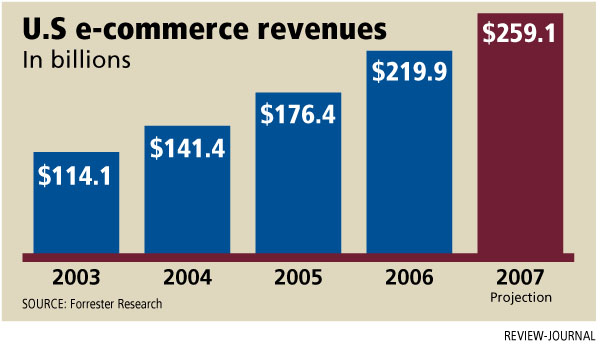Be quick, or your shopper will click

In the convenient world of online shopping, sometimes a few seconds’ delay on a retailer’s Web site can cost a transaction, an industry expert said.
Fast and efficient Web site performance is crucial for online retailers today as shoppers become more Web savvy, Ben Rushlo, senior consulting manager for Keynote Systems, said Wednesday at the Shop.org annual summit at Mandalay Bay.
The Internet has evolved from being more of a novelty with a “wow” factor to being more like a utility such as a telephone that many people see as more of a necessity than a luxury, he said.
“It’s moved from being a cool thing to ‘make sure it’s working all the time,'” Rushlo said.
The stakes for online retailing are raised during the holiday shopping season. The National Retail Federation released its forecast for the upcoming holiday season, predicting that sales will rise 4 percent this year to $474.5 billion.
Rushlo said he checked Web sites of major retailers such as Circuit City, Wal-Mart, Best Buy and Macy’s last holiday season and they were all down at some point.
“That’s like having a brick-and-mortar (store) with people outside waiting to come in and you say, ‘We’re closed. Come back later,'” he said.
In a seminar titled “How You Can Save Christmas,” Rushlo and Jeremy Dalnes, vice president of e-business for Panasonic, highlighted 10 steps to ensure top-quality Web site performance.
One of the most important ways is for retailers to test the site with their “wildest dream” holiday traffic, Rushlo said. Whatever the load is today, triple it and see what happens, he said.
Rushlo suggests testing not just from the data center, but from an outside Internet connection. He also suggests testing with realistic paths and a mix of user types.
He tested the site of a top 10 retailer and found that it took 24 seconds to bring a product back on the screen after he had put it away, compared with two to four seconds normally.
“If sites are slow coming up, people get frustrated and leave and usually they end up not coming back, but buying somewhere else,” Rushlo said.
Retailers need to make sure their Web site is ready today.
“If you’re looking at improving your site for the holidays in November, you’re done,” he said. “I guarantee when the holidays come and traffic to your site triples, it’s going to be annihilated.”
Outsourcing information technology is increasing because of cost savings and operating efficiencies, but also because it’s difficult to get a “team-based culture in play,” Dalnes said.
“They don’t necessarily understand your key business objectives,” he said. “It’s important to the (business) owner to own the customer experience.”
Fixing product detail on Web pages will top to-do lists for retailers over the next 12 months, a study conducted by Forrester Research for Shop.org suggests.
The survey of 150 retailers found that 88 percent plan to focus on improving content presented on product detail pages with 80 percent adding alternative images, 72 percent incorporating lifestyle photography and 63 percent integrating customer ratings and reviews.
Chris Dingle, manning an exhibit for Montreal-based My Virtual Model, said the site will soon have the technology to put a picture of someone’s face on a selected body size to try out clothes online.
“You’re able to mix and match different brands like H&M, Sears, Land’s End and Speedo,” he said. “So the customer goes through and tries out garments.”
Users are able to personalize their body shape by choosing their height, weight, bust size and a waist that is either “well defined” or “undefined.”
Shop.org spokeswoman Ellen Davis said the transition from dial-up to high-speed Internet access has dramatically changed online retailing. Ten years ago, retailers’ Web sites had to be pretty basic with limited imagery because they took so long to load. Today, shoppers are able to zoom in on a product, turn it around and look at it from different angles, she said.
Electronic commerce, or e-commerce, grew 25 percent in 2006 to $219.9 billion and is projected to grow 18 percent this year to $259.1 billion, according to the State of Retailing Online report from Forrester Research.
Travel is by far the leading category for online retailing with $73.4 billion in 2006 sales, followed by apparel, accessories and footwear, $18.3 billion; computer hardware and software, $17.2 billion; auto and auto parts, $16.7 billion; home furnishings, $10 billion; and consumer electronics, $9.8 billion.
“The channel continues to move full steam ahead while capturing a larger share of total retail sales,” the report said. “This strong growth is an indication that the online retail channel is still years away from reaching its saturation level and still has several years of double-digit growth ahead.”












